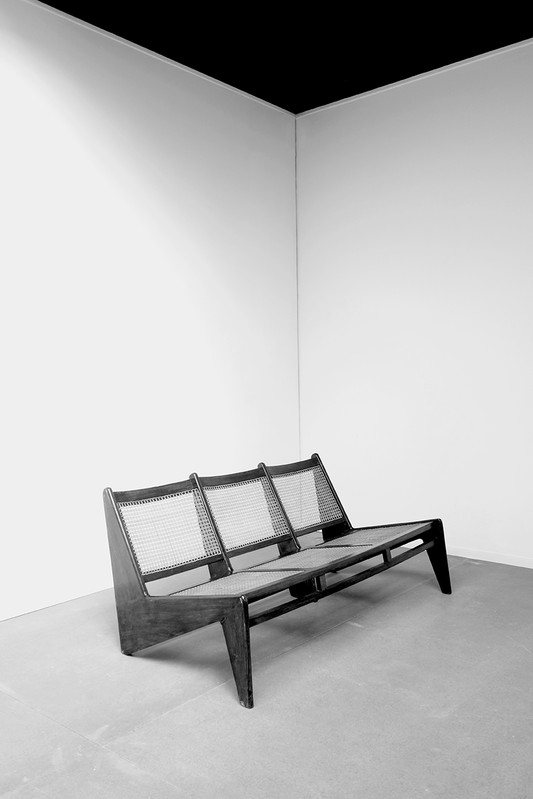Pierre Jeanneret — Le Corbusier/Chandigarh
Exhibition

Pierre Jeanneret
Le Corbusier/Chandigarh
Past: October 22 → November 21, 2015
Jousse Entreprise is pleased to announce an exhibition by pieces by Pierre Jeanneret, some of them rare, hailing from the city of Chandigarh. One or two pieces by Le Corbusier, also from Chandigarh, will also be on view.
Pierre Jeanneret (1896-1967), an architect and designer of furniture, be it private or urban, worked for many years with his cousin Le Corbusier, particularly through the creation and organization of the CIAMs (International Congresses of Modern Architecture). In the shadows and discretion that suited him, he produced an oeuvre attesting to an original and demanding way of thinking. Between the two men there was a difference in approach. Precisely where Le Corbusier preferred order and organization, Jeanneret had ideas which he himself described as “always a bit anarchic”, and, throughout his life, he cultivated the spirit of an experimenter, for example assembling found materials, the fruit of his observation. In spite of everything, at the dusk of his life, he declared that he was “the architect closest to Le Corbusier where action was concerned.” In 1950, at the invitation of Nehru, the two men were the principal project managers for the construction of the city of Chandigarh, designed to become the capital of the State of Punjab, after the Indo-Pakistan war. Today, the city contains the World’s most important concentration of the works of Le Corbusier and Pierre Jeanneret.
For fifteen years, Jeanneret devoted all his efforts to that project. On a surface larger than that of the city of Paris, for a population that today exceeds one million inhabitants, what was involved was building not only a business district, an industrial sector and an administrative quarter, but also thoroughfares and residential neighbourhoods. Jeanneret surrounded himself with a team of young Indian architects. He ended up by settling in Chandigarh and, in questioning his own ideas and conceptions, he often adopted the Indian viewpoint. For himself and Le Corbusier he summed up the meaning of that thoroughly excessive adventure with the striking words: “In a way, Chandigarh was for the two of us a clearing in the human jungle”.
He was thus forever placing himself at the crossroads of his two main concerns: designing objects for inhabitants and asserting the power of invention as the universal value of the modern movement. He only left Chandigarh in 1965 because of sickness, and he died a few months later in Geneva, in 1967.
The exhibition presents a coherent selection of pieces, marked by this concern with things human and this attentiveness to the world. Most of them come from the administrative buildings of Chandigarh, such as the Parliament, the High Court, hospitals, and Punjab University.
Some of the pieces on view in the show are outstanding: one such is the sole model found to date of the “Kangoo” sofa. It rubs shoulders with the impressive and rare “Glass Bookshelves”, made of solid teak, in 1960. An “Illuminating Table” and a “Square Table”, accompanied by a set of seats and armchairs, round off this presentation.
Complementing these pieces, the exhibition presents two emblematic Le Corbusier objects: the three-legged “Tree Trunk” table and, above all, one of the “Concrete lights”, lighting elements with a concrete structure based on the model of those of a Unité d’Habitation in Marseille. These two objects perfectly illustrate Le Corbusier’s ambition: “Architecture is the correct and magnificent shrewd interplay of volumes assembled in light”, as he wrote in 1927, in Vers une architecture. DL
-
Opening Thursday, October 22, 2015 4 PM → 10 PM
Opening hours
Monday, 2 PM – 7 PM
Tuesday – Saturday, 11 AM – 7 PM
The artists
- Pierre Jeanneret
- Le Corbusier
-
Louidgi Beltrame





